Lunar New Year or Tet Nguyen Dan, Tet Ca, Tet Ta or Tet is the most important and biggest festival not only in Vietnam but also to all Asian countries, one of the many traditional Tets and holidays in Vietnam.
Tet Nguyen Dan has the origin from the Lunar New Year of Chinese culture that has been influenced by Vietnamese culture for a long time. The Lunar New Year is based on the lunar calendar to celebrate the end of a lunar year and to welcome the upcoming year. For the lunar calendar is counted based on the periods of the moon, so the Lunar New Year Eve is often late than the New Year Eve of the Gregorian calendar one or two months. In Vietnam, Lunar New Year is always from the end of January to mid-February which is calculated into a duration of 7 days of the old year and 7 days of the new year.
Vietnamese people prepare for this event about 2 weeks before the last day of the year using this time to buy foods, ingredients to make Chung cake, decors, clothes…All people, especially the children, are excited about Tet. This is also the time for gathering; so everyone, despite of work and location, tends to return home as soon as possible. There is also a belief that if you pay all the debt before Tet, you will be debt-free in the new year. Children are bought new clothes and stuff; the houses are decorated and cleaned. The first event to mark Tet must be the Kitchen Guardians Sending-off in 23rd of the 12th lunar month. To understand more about this important ritual, we have to tell the tale of Ong Cong Ong Tao.
The kitchen guardians are 2 male and one female god that are gods of soil, house and kitchen. However, people tend to call them commonly Tao Quan as one god. The story began with Thi Nhi, the wife of a man called Trong Cao. They married each other for quite a time but had no children and this made the husband bitter towards his wife. One day, Trong Cao beat Thi Nhi and evicted her out of the house. The wife wandered off to other land and met a man called Pham Lang who helped and took care of her. They became husband and wife. Trong Cao, not long after, regretted and went to find Thi Nhi. Day after day, Trong Cao couldn’t find her, and already spent all his money; he had to beg people and lived on the streets. Other days, he came to a house that happened to be the house of Thi Nhi and Pham Lang unknowingly. While her new husband was absent, she realized Trong Cao, brought him in and offered a meal for the poor man. When Pham Lang came back, she was afraid that her husband would misunderstand the situation so she hid Trong Cao in the straw heap in the back yard. Unfortunately, Pham Lang fired the straw heap without knowing that Trong Cao was in there. Thi Nhi saw and ran straight into the firing heap to save her used-to-be husband. Pham Lang saw his wife running into the fire, followed after. All three of them died. Jade Emperor showed mercy upon the tragic, made them the guardians of the kitchen in every Vietnamese family, to keep them safe and sound throughout the year. When the year ends, the three of them have to come back to heaven to report about the good deeds and bad deeds of all members of all families. In the morning of the 23rd of 12th lunar month, each family will offer a feast and votive to the guardians. There is a ritual of returning a golden fish to a lake or river symbolizing the fish as transportation means for the guardians for his way to heaven.
Chung and Giay Cakes are a big part of the New Year in Vietnam. Making Chung is a tradition started with the legend of Lang Lieu – legendary prince of ancient Van Lang – who made this cake upon the omen of gods. Chung cake standing for the ground or the earth is square while Giay cake is in the round shape of the sky. Both cakes – made mostly of rice – standing together on the ancestor altar represent for the harmony of the earth and the heaven to bring a thriving life to all creatures around the world. To Viet people, rice, from the start of history, had always been the fountain that keeps all generations overcoming many hardships, flourishing and dreaming about a better future. Using rice to make Chung and Giay cakes is to show gratitude of the people and to thank the gods. From 26th or even earlier, many parents start to prepare dong leaves to make Chung cake. The main ingredients are glutinous rice, pork meat, and green beans wrapped in a square of banana leaves. The meat will be placed in the centre of the cake, being wrapped first by cooked mung beans then the thickest layer of rice. Averagely 10 – 15 Chung cakes need a time of 10 – 12 hours boiling by firewood. In the traditional conception of Vietnamese people, the process of making Chung cake is the chance to bring the family closer. They stay awake, sit around the fire during the last night of the year while waiting for the cakes. Vietnamese people also have a tradition of giving Chung cakes as New Year gifts to friends and relatives and people consider Chung cake as the most precious gift of the occasion.
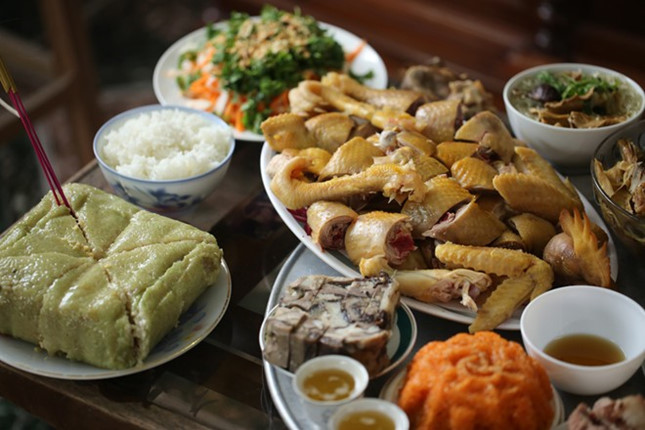
The last dinner of the old year is where all family members gather and enjoy many traditional dishes, share their stories about things they achieved and things they wish in the year to come. After the dinner, the family spends the night together to wait for the Lunar New Year’s Eve. In the old days, the ones who went out in the night when come back bring a branch of tree or flower buds like bringing good fortunes to home. Nowadays, people often buy a sugarcane tree or a small flower pot.
Each house during Lunar New Year is decorated with bright and vivid colours such as gold, silver, red and green… which represent for wealth, thrive and happiness. Distichs are hung on the door, flowers and bonsai trees are placed from gate to table. Peachtree and kumquat tree are used to decorate the house in the north, the apricot tree in the south. The pinkish peach flower is believed to have the power to expel all bad luck and evils while kumquat fruits bring hope for a new year of growth and richness in everything. In the south, the apricot flower is the symbol of nobility and reminds of the king.
The first day of the new year is the most important day in the year. On this day, traditionally people don’t go out for outdoor activities; they stay inside, feasting and enjoying the time with family members. In modern time, the elders wait to welcome their offspring to come. The children are given red envelopes containing money from the elders to wish them luck in the new year. This tradition is called mừng tuổi (happy new age) in the north and lì xì in the south.
Vietnamese believe that the first visitor a family receives in the year determines their fortune for the entire year, people never enter any house on the first day without being invited first. The act of being the first person to enter a house on Tết is called xông đất, xông nhà or đạp đất, which is one of the most important rituals during Tết. The first visitor is usually one of the relatives who have match age with the host or is a person of good temper, high morality and success.
Foods
Besides Chung and Giay cake, there are many other dishes that can’t be missed in Tet. Mam Ngu Qua (Tray of Five Fruits) contains 5 types of most common fruits in Vietnam such as banana, kumquat, grapefruit, watermelon, dragon fruit…. This tray is placed on an ancestor altar during the whole time of Tet. Pickled onion and pickled cabbage will appear in every meal of the time. Mut or dried candied fruits are offered to welcome guests and visitors. And many more.
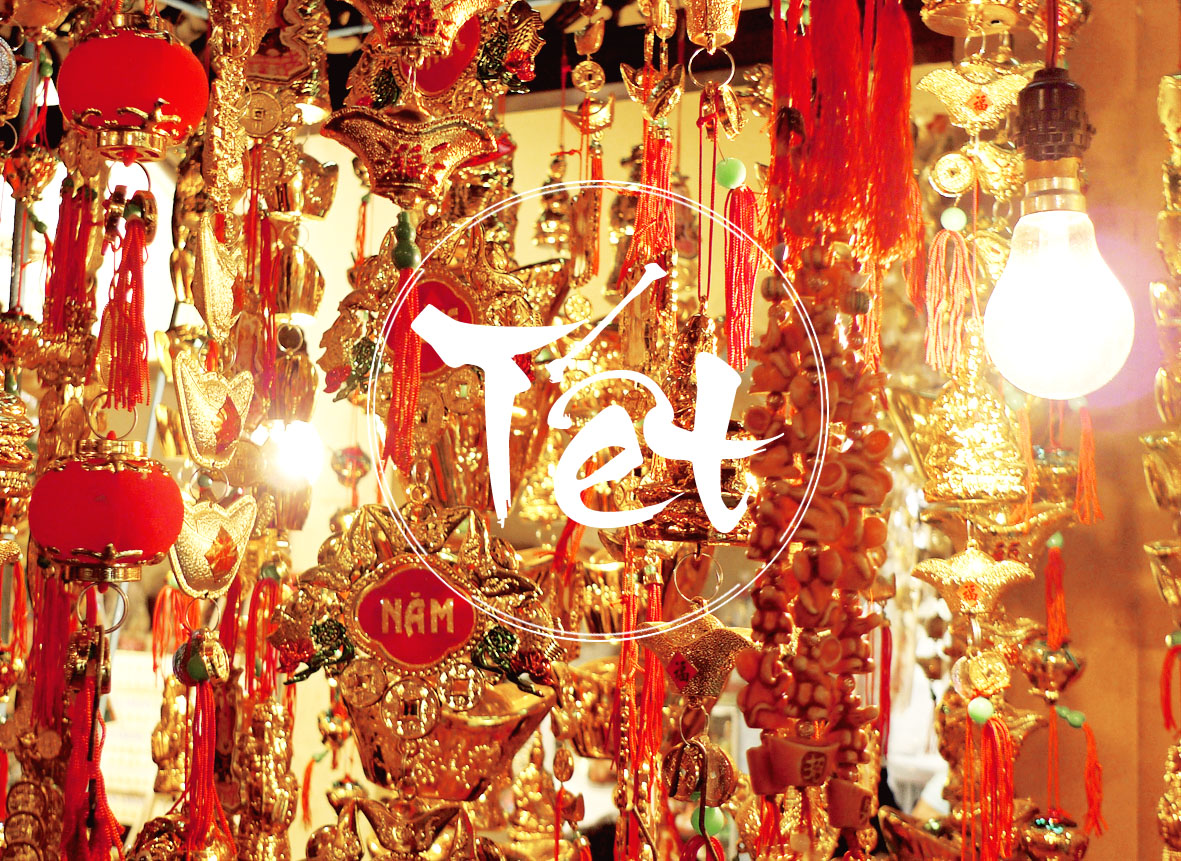
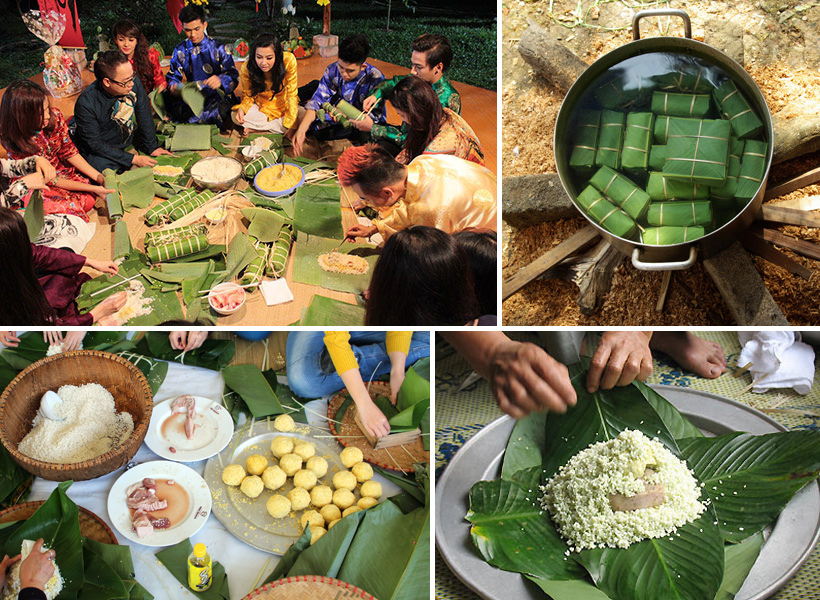
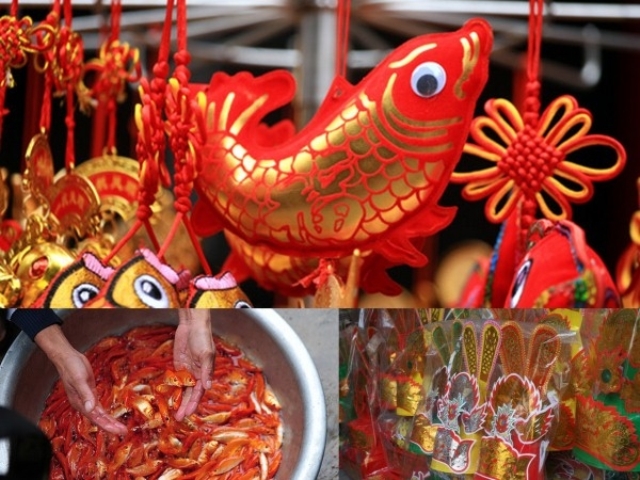
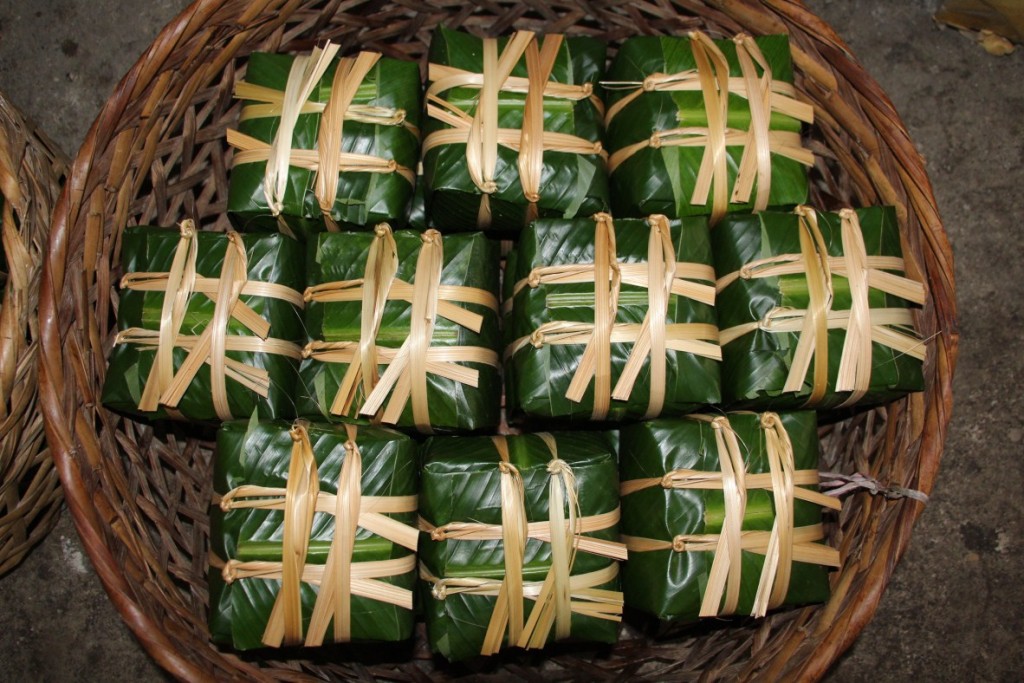
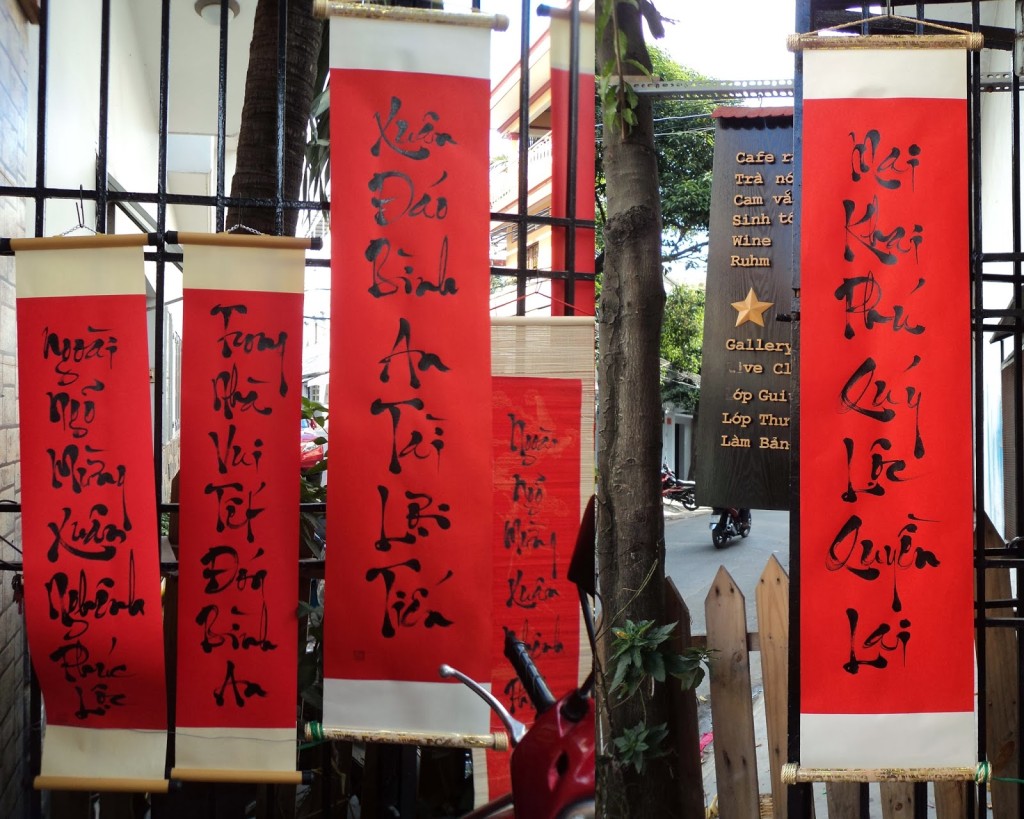
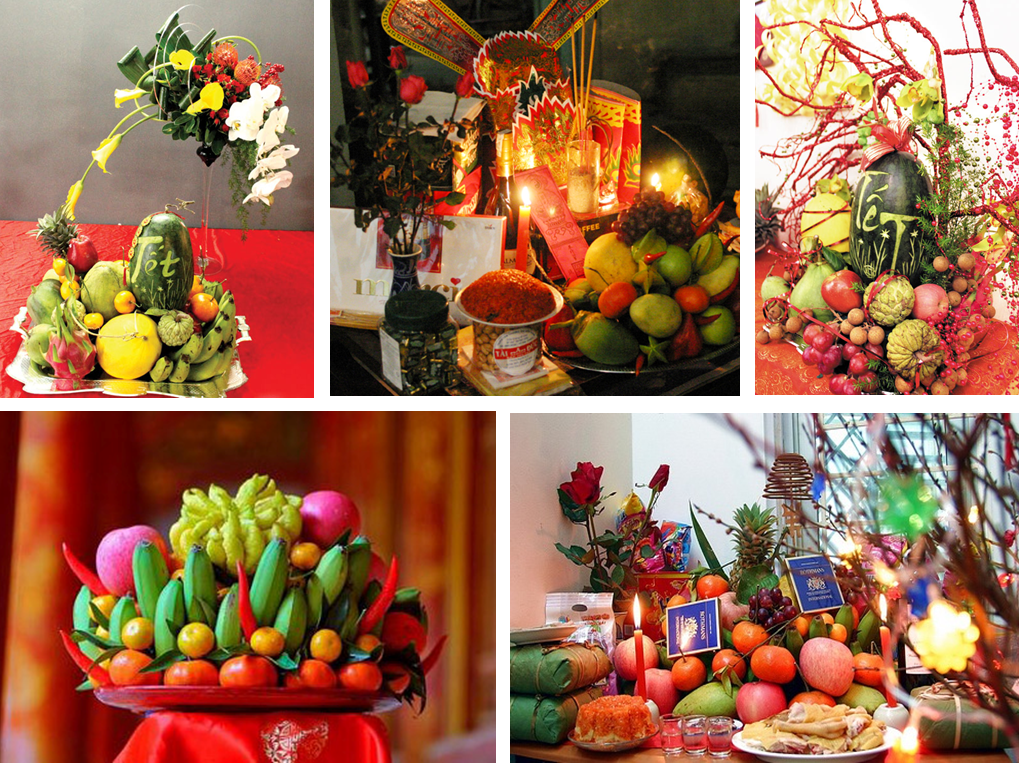
[…] Tet Nguyen Dan – Lunar New Year […]
[…] foreigners, who once visited Vietnam in the weeklong Tet holidays did have a good time enjoying the country’s cultural charms but at the same time, were confused […]
[…] Lunar New Year or Tet, Vietnamese people spend the whole second month of the lunar year to hold many traditional […]
[…] Lunar New Year or Tet, Vietnamese people spend the whole second month of the lunar year to hold many traditional […]
[…] Lunar New Year (or Tet) is the biggest holiday of Vietnamese people, celebrated on the first day of the first month on the lunar calendar, usually starts between late January and early February according to Gregorian calendar. That explains why Tet varies from year to year. Next Monday February 8, 2016, millions of Vietnamese all around the world will celebrate the Year of the Monkey. The official holiday lasts three days, but celebrations continue for at least the first week of the New Year. […]